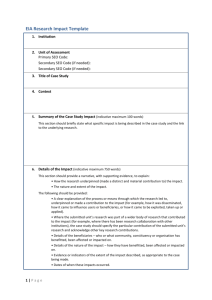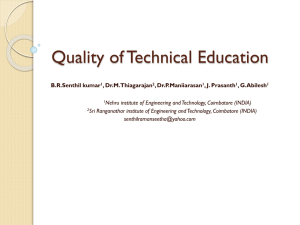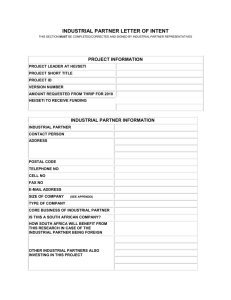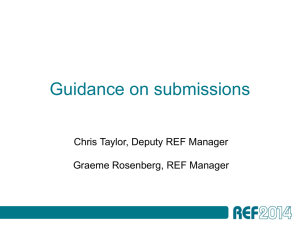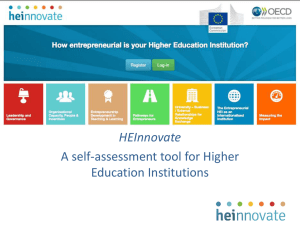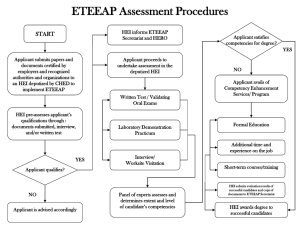case studies will be about 4 sides of A4 long and must set out the
advertisement
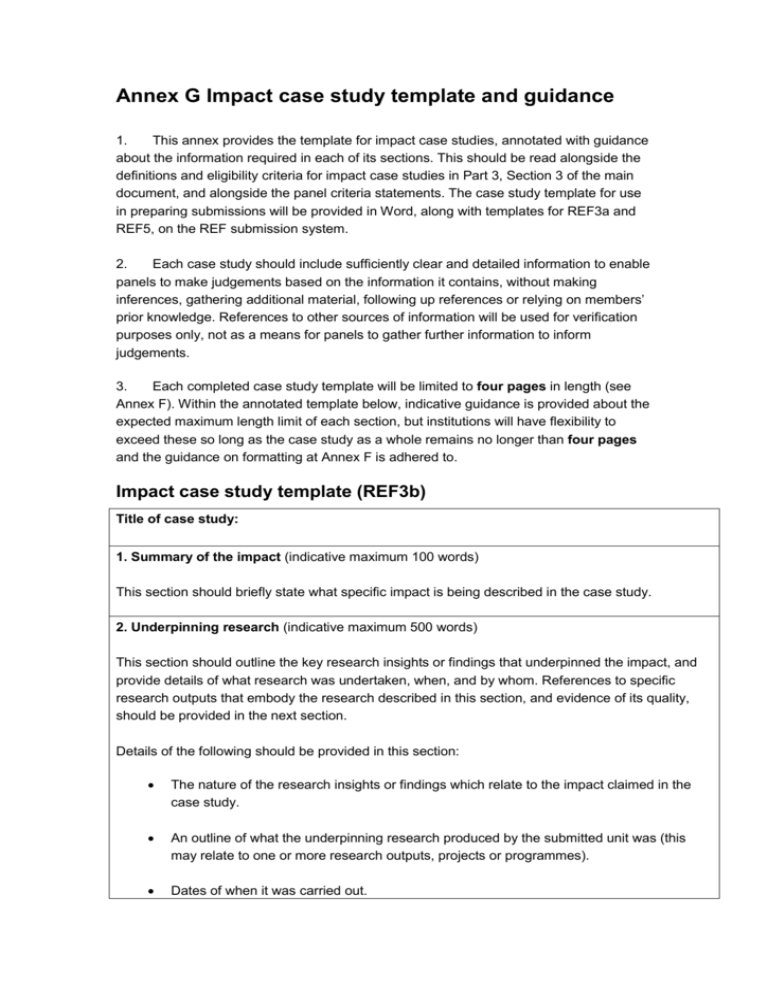
Annex G Impact case study template and guidance 1. This annex provides the template for impact case studies, annotated with guidance about the information required in each of its sections. This should be read alongside the definitions and eligibility criteria for impact case studies in Part 3, Section 3 of the main document, and alongside the panel criteria statements. The case study template for use in preparing submissions will be provided in Word, along with templates for REF3a and REF5, on the REF submission system. 2. Each case study should include sufficiently clear and detailed information to enable panels to make judgements based on the information it contains, without making inferences, gathering additional material, following up references or relying on members’ prior knowledge. References to other sources of information will be used for verification purposes only, not as a means for panels to gather further information to inform judgements. 3. Each completed case study template will be limited to four pages in length (see Annex F). Within the annotated template below, indicative guidance is provided about the expected maximum length limit of each section, but institutions will have flexibility to exceed these so long as the case study as a whole remains no longer than four pages and the guidance on formatting at Annex F is adhered to. Impact case study template (REF3b) Title of case study: 1. Summary of the impact (indicative maximum 100 words) This section should briefly state what specific impact is being described in the case study. 2. Underpinning research (indicative maximum 500 words) This section should outline the key research insights or findings that underpinned the impact, and provide details of what research was undertaken, when, and by whom. References to specific research outputs that embody the research described in this section, and evidence of its quality, should be provided in the next section. Details of the following should be provided in this section: The nature of the research insights or findings which relate to the impact claimed in the case study. An outline of what the underpinning research produced by the submitted unit was (this may relate to one or more research outputs, projects or programmes). Dates of when it was carried out. Names of the key researchers and what positions they held at the institution at the time of the research (where researchers joined or left the HEI during this time, these dates must also be stated). Any relevant key contextual information about this area of research. 3. References to the research (indicative maximum of six references) This section should provide references to key outputs from the research described in the previous section, and evidence about the quality of the research. Include the following details for each cited output: Author(s). Title. Year of publication. Type of output and other relevant details required to identify the output (for example journal title and issue). Details to enable the panel to gain access to the output, if required (for example, a DOI or URL), or stating that the output is listed in REF2 or can be supplied by the HEI on request. All outputs cited in this section must be capable of being made available to panels. If they are not available in the public domain or listed in REF2, the HEI must be able to provide them if requested by the REF team. Evidence of the quality of the research must also be provided in this section. Guidance on this will be provided in the panel criteria documents. Where panels request details of key research grants or end of grant reports, the following should be provided: Who the grant was awarded to. The grant title. Sponsor. Period of the grant (with dates). Value of the grant. 4. Details of the impact (indicative maximum 750 words) This section should provide a narrative, with supporting evidence, to explain: how the research underpinned (made a distinct and material contribution to) the impact the nature and extent of the impact. The following should be provided: A clear explanation of the process or means through which the research led to, underpinned or made a contribution to the impact (for example, how it was disseminated, how it came to influence users or beneficiaries, or how it came to be exploited, taken up or applied). Where the submitted unit’s research was part of a wider body of research that contributed to the impact (for example, where there has been research collaboration with other institutions), the case study should specify the particular contribution of the submitted unit’s research and acknowledge other key research contributions. Details of the beneficiaries – who or what community, constituency or organisation has benefitted, been affected or impacted on. Details of the nature of the impact – how they have benefitted, been affected or impacted on. Evidence or indicators of the extent of the impact described, as appropriate to the case being made. Dates of when these impacts occurred. 5. Sources to corroborate the impact (indicative maximum of 10 references) This section should list sources external to the submitting HEI that could, if audited, provide corroboration of specific claims made in the case study. Sources provided in this section should not be a substitute for providing clear evidence of impact in section 4; the information in this section will be used for audit purposes only. This section should list sufficient sources that could, if audited, corroborate key claims made about the impact of the unit’s research. These could include, as appropriate to the case study, the following external sources of corroboration (stating which claim each source provides corroboration for): Reports, reviews, web links or other documented sources of information in the public domain. Confidential reports or documents (if listed, these must be made available by the HEI if audited). Individual users/beneficiaries who could be contacted by the REF team to corroborate claims*. Factual statements already provided to the HEI by key users/beneficiaries, that corroborate specific claims made in the case study and that could be made available to the REF team by the HEI if audited*. * Where the sources are individuals who could be contacted or have provided factual statements to the HEI, the submitted case study should state only the organisation (and, if appropriate, the position) of the individuals concerned, and which claim(s) they can corroborate. Their personal details (name, position, contact details) must be entered separately on the REF submission system and not on REF3b. Details of a maximum of five individuals may be entered for each case study; these data will not be published as part of the submission.
